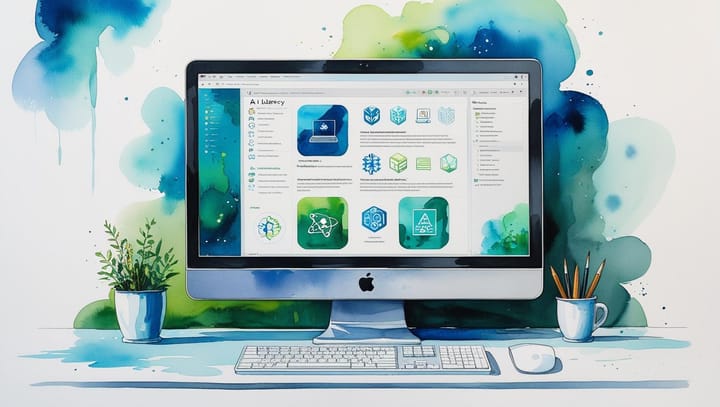Teaching Responsibly with AI, Webinar #2: Media and AI Literacy
Over 1,200 educators joined us live for the second event in our new webinar series.

This was the second event in our Teaching Responsibly with AI webinar series. For Bot or Not? Embedding Media and AI Literacy into Higher Education Teaching Strategies, GPTZero was thrilled to welcome Stephanie Speicher, Digital Fluency Faculty in Residence at Weber State University. We loved what she shared, including the five practical ways to embed AI and media literacy into higher education teaching, and we’ve captured her key points below.
Meet the Speaker: Stephanie Speicher
This session was led by Stephanie Speicher, Digital Fluency Faculty in Residence at Weber State University. Stephanie specializes in designing engaging, human-centered curricula that thoughtfully integrates technology. Her expertise in creating relevant learning experiences makes her the perfect guide for exploring media literacy in the AI era.
What is real in 2025?
Speicher kicked off her session with this compelling question, with two AI-generated images on screen: one of Trump being arrested, the other of a serene older woman. She invited attendees to spot the tells, which included “the hand and the arm,” “Trump’s leg,” and “just weird legs.” She reminded us that these images are everywhere now and reminded us that a top priority “is how we get students to be curious and to ask the questions that matter.”
To show how spookily prevalent AI-generated misinformation has become, Speicher shared a personal example: “It was a summer reading list that… three-quarters of it was generated by AI. Half of the books on this list didn’t exist.” She had received the list from a trusted colleague and initially assumed it was real, only later discovering that many of the titles were fabricated. “This is prevalent across industries, across sectors,” she noted. “And this is why it is even more important that we are here today and having this conversation.”
From her own experience growing up in the ‘90s, she recalled standing at the grocery store checkout and seeing sensational headlines. Even then, she said, the media could “manipulate the truth in ways that could move the needle or make change that might not be best for people.” Today, the tools may have changed, but the stakes are higher.
“It is the conversation that matters the most,” she said. For her, AI literacy is about creating classrooms where students feel safe enough to ask and seek the truth. It is no longer optional, she stresses, but a crucial part of preparing students for real life.
What the Data’s Telling Us
Speicher highlighted some recent global data, starting with a recent impact study surveying nearly 4,000 participants across the U.S., including K-12 students, undergraduates, parents, and faculty. The findings weren’t a huge shock: “Our use of ChatGPT or AI tools is only going to continue to grow in the next five years.”
Yet what was more surprising to her was the report’s framing of the “AI vacuum”, as in a lack of clear policy or direction, leaving students to figure things out alone. “They’re using the tools anyway… but not necessarily in the most educated ways.” This is where there is an urgent lesson: in the absence of guidance, higher education will have to take the lead in embedding AI literacy into everyday teaching.
She then pointed to the World Economic Forum’s Future of Jobs Report, asking the audience, “What do you think are the core skills of 2025?” She pulled out the top 10:
She highlighted that AI and big data top the list of skills on the rise over the next five years. These skills (analytical thinking, empathy, AI fluency) can’t be built without also embedding critical literacies. “A huge part of this is literacy,” Speicher stressed. “Media literacy, world literacy, and then we’ve got that AI literacy that really is confounding everything our students are engaging with.”
At her university and in conversations with colleagues, one shared concern keeps rising: critical thinking. “It is so important to our students being able to be media literate, to understand the AI landscape,” she explained. The challenge (and opportunity) for educators is asking: Am I building these critical literacy skills so my students can be critical thinkers in the classroom?
Reflecting on her teaching journey since 1994, Speicher said that while some traditional methods still work, today’s information environment is unlike anything we’ve seen before. With “2.5 quintillion (!) bytes of data created daily,” students now have to decipher fake content and algorithmic distortion.
This is why she’s a proponent of tools like GPTZero to support responsible inquiry. Her formula for this new world is:
Traditional media literacy + AI understanding + algorithm awareness = modern critical thinking
Five Practical Strategies You Can Steal and Adapt
Speicher shared the following strategies for embedding media and AI literacy in the curriculum.
- Information Ecosystem Mapping
This helps students to map their personal information consumption patterns. Have students run text snippets from different sources through GPTZero to understand how AI-generated content appears in the information ecosystem. Tracking: “How much of my daily information consumption might be AI-generated?”
- Reverse Engineering Content Creation
Students create content using different methods to understand construction (e.g., human-written analysis vs. AI-assisted research). After creating both versions, students run their own writing through GPTZero to see how their AI-assisted work is detected. Analyze: “What patterns does GPTZero identify in my AI-assisted writing vs. my purely human writing?”
- Verification Library
Dedicate class sessions for practicing verification skills. Students can use GPTZero and follow a protocol where they run through the verification tool, analyze the score and what it means, cross-reference with other verification methods, and draw conclusions based on multiple data points. Students learn that GPTZero results are evidence to consider as opposed to final verdicts.
- Algorithmic Bias Investigation
Speicher suggests that students actively research and expose bias in AI systems. Students generate content using AI tools, then use GPTZero to analyze the detectability patterns. They investigate: “Are certain types of biased content more or less detectable by GPTZero? How does GPTZero perform when analyzing content about different demographic groups or controversial topics?
- Visual Literacy and AI Image Detection
Lastly, students develop skills to identify AI-generated images and understand visual manipulation. This involves presenting mixed sets of authentic and AI-generated images for analysis, and teaching systematic visual analysis (e.g., lighting inconsistencies). Practice with reverse image search and metadata analysis, and build an understanding of deep fakes vs. other image manipulation.
Overall, Speicher encouraged educators: “Be thoughtful, strategic, and deliberate.” This means:
“Really be thoughtful about how you can integrate these literacy components into what you already do. Yes, these are new literacy skills and our fields and our disciplines are changing. With that, though, there are numerous ways that we can incorporate these literacies into the work that we're already doing.”
To close the session, she left with a thought-provoking prompt: “What’s one small shift you can make to support students in becoming more literate consumers and creators of AI-generated content?”
She urged educators to focus on two things: first, teaching students to ask better questions (curious, critical thinking questions). Second, helping them understand that all media are created. What’s included and what’s left out affects the message.
And finally, she left with this reminder: “Educators should actively question the role that they want these technologies to play in our lives and the way that we engage with each other. And that includes schools, colleges, universities, because we are that place where the magic happens.”
Watch the entire replay here.


